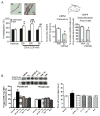Why estrogens matter for behavior and brain health
- PMID: 27039345
- PMCID: PMC5045786
- DOI: 10.1016/j.neubiorev.2016.03.024
Why estrogens matter for behavior and brain health
Abstract
The National Institutes of Health (NIH) has required the inclusion of women in clinical studies since 1993, which has enhanced our understanding of how biological sex affects certain medical conditions and allowed the development of sex-specific treatment protocols. However, NIH's policy did not previously apply to basic research, and the NIH recently introduced a new policy requiring all new grant applications to explicitly address sex as a biological variable. The policy itself is grounded in the results of numerous investigations in animals and humans illustrating the existence of sex differences in the brain and behavior, and the importance of sex hormones, particularly estrogens, in regulating physiology and behavior. Here, we review findings from our laboratories, and others, demonstrating how estrogens influence brain and behavior in adult females. Research from subjects throughout the adult lifespan on topics ranging from social behavior, learning and memory, to disease risk will be discussed to frame an understanding of why estrogens matter to behavioral neuroscience.
Copyright © 2016 Elsevier Ltd. All rights reserved.
Figures





References
-
- Adams JP, Sweatt JD. Molecular psychology: Roles for the ERK MAP kinase cascade in memory. Annu Rev Pharmacol Toxicol. 2002;42:135–163. - PubMed
-
- Amiaz R, Seidman SN. Testosterone and depression in men. Curr Opin Endocrinol Diabetes Obes. 2008;15:278–83. - PubMed
-
- Alkayed NJ, Harukuni I, Kimes AS, London ED, Traystman RJ, Hurn PD. Gender-linked brain injury in experimental stroke. Stroke. 1998;29:159–165. discussion 166. - PubMed
-
- Alkayed NJ, Murphy SJ, Traystman RJ, Hurn PD, Miller VM. Neuroprotective effects of female gonadal steroids in reproductively senescent female rats. Stroke. 2000;31:161–168. - PubMed
Publication types
MeSH terms
Substances
Grants and funding
LinkOut - more resources
Full Text Sources
Other Literature Sources

